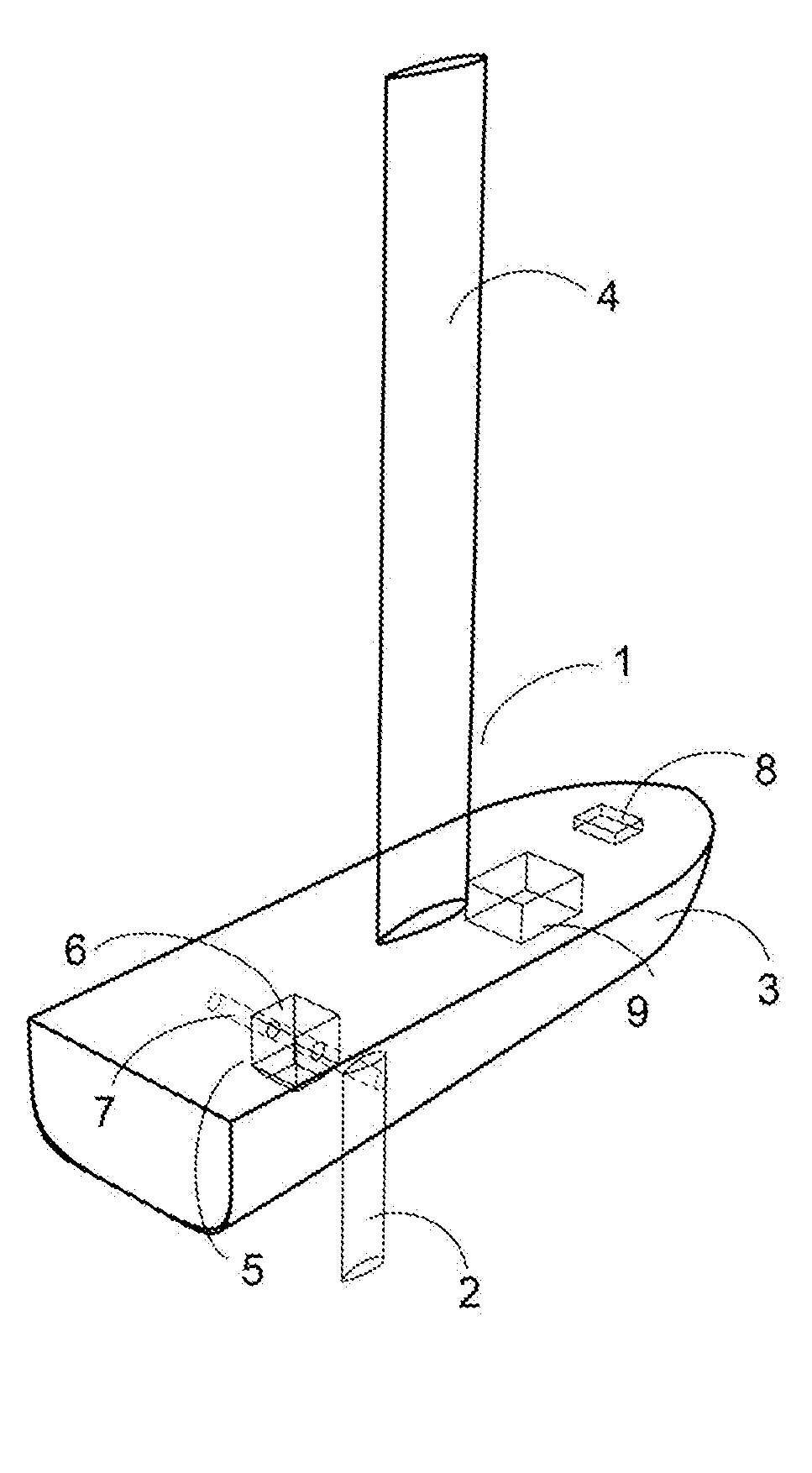Internally actuated autonomous sailing buoy
a technology of autonomous sailing and internal actuation, which is applied in the direction of buoys, steering components, vessel movement reduction by mass displacement, etc., can solve the problems of very little maintenance and the deployment feature decreases operational costs, and achieves significant increase in resistance to harsh weather
- Summary
- Abstract
- Description
- Claims
- Application Information
AI Technical Summary
Benefits of technology
Problems solved by technology
Method used
Image
Examples
Embodiment Construction
[0027]Referring to FIGS. 1 and 3A-B-C, the autonomous internally actuated sailing buoy is shown generally at 1. The buoy includes a keel 2 attached to the hull or buoy body 3, and a fixed rigid wing 4 for the sail, also attached to the buoy body 3. Since the keel 3 and the wing 4 have both a fixed position along the length of the body buoy, they can either be attached rigidly to the body buoy 3, or the three objects 2, 3 and 4 can be made together as a single rigid closed object, thus keeping the number of openings in the buoy body to a minimum and decreasing the need for water-proof joints. In order to make steering possible an automatic moving mass system 5 inside the buoy replaces the standard “articulated” rudder and sail. The moving mass system 5 is based on a mass 6 movable on a track 7 along the transversal plane of the sailing buoy 1, and acts directly on the heel angle of the buoy (see FIG. 2). Another way to change the mass distribution of the sailing buoy 1 is to change t...
PUM
 Login to View More
Login to View More Abstract
Description
Claims
Application Information
 Login to View More
Login to View More - R&D
- Intellectual Property
- Life Sciences
- Materials
- Tech Scout
- Unparalleled Data Quality
- Higher Quality Content
- 60% Fewer Hallucinations
Browse by: Latest US Patents, China's latest patents, Technical Efficacy Thesaurus, Application Domain, Technology Topic, Popular Technical Reports.
© 2025 PatSnap. All rights reserved.Legal|Privacy policy|Modern Slavery Act Transparency Statement|Sitemap|About US| Contact US: help@patsnap.com



